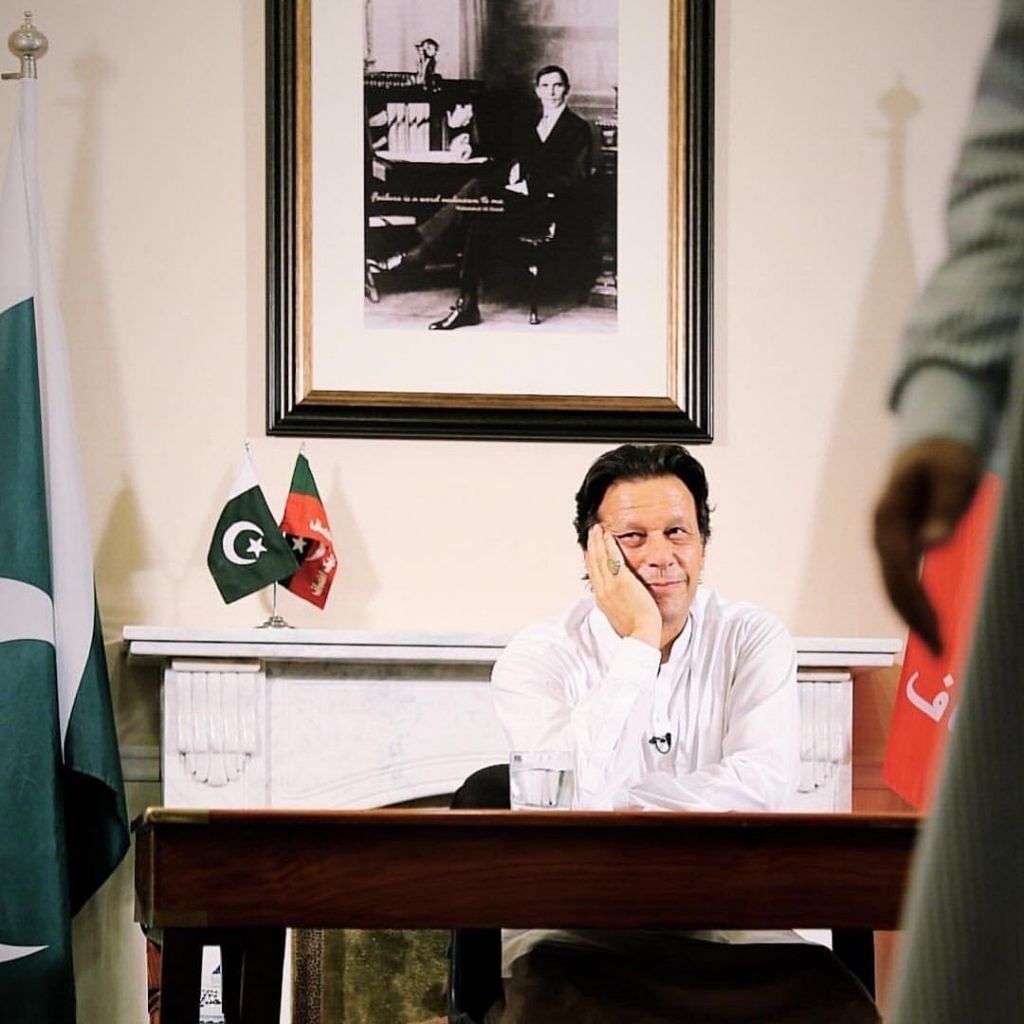The man who once wooed the world in blue jeans and sunglasses has now religiously taken to the simple white ‘shalwar-qameez’.
Prime Minister Imran Khan has ushered in a new wave of fashion in Pakistan. Khan, who was known to be a style icon during his cricketing years, has changed his manner of clothing considerably during his journey from the bat to the throne. And the people of Pakistan followed.
The man who once wooed the world in blue jeans, dapper tucks and sunglasses has now religiously taken to the simple white ‘shalwar-qameez’. However this isn’t a frivolous fashion experiment, like when Khan decided to sport a bob-cut at the age of 25, but a well thought out political move.
A white shalwar-qameez is also known as the political ‘vardi’ (uniform) in Pakistan. This ‘siyasi’ (political) attire has defined Pakistan’s political class for a while. Former ousted Prime Minister of Pakistan Nawaz Sharif also adopted it. However, Pakistan Tehreek-e-Insaf members have recently carved their siyasi identity through urban-desi attire, with Imran Khan as the leading showstopper.
Also read: Imran Khan’s Naya Pakistan already has the ‘purana’ Pakistan solidly embedded
One old apparel that Khan has chosen to keep in his new wardrobe is the pair of Peshawari/Kohati chappals, or as they are now called the ‘Kaptaan chappals’. These were popularised by Khan during his cricketing years. The footwear made a comeback in Pakistani fashion once again when Khan started his electoral campaign. While this has given a boost to the local Kohati/Peshawari footwear businesses, the chappals are also being sold online for as much as $47 a pair.
This transition in Imran Khan’s style, towards a more simplistic dressing, is also aligned with the austerity policies adopted by the PTI. Khan’s party had promised to impose cost-cutting measures in the government to fight poverty and bring the economy back on track. Since coming to power, Khan’s party has been trying to prove that this remains a priority for them. Khan, for example, refused the official Mercedes convoy of cars and the Prime Minister House given to him. He entertains foreign dignitaries with chai and water, not lavish feasts.
Also read: Imran Khan’s Naya Pakistan is set to end the grip of VIP culture on politics
There were also rumours that Khan refused to get a new attire stitched for his oath-taking ceremony last week. Although a new black sherwani was stitched for Khan for this special occasion, the Pakistani social media was divided in their reaction to it. Some swooned over how handsome he looked, while others mocked the “ill-stitched” and “XXL” fit of the clothing.
Imran Khan is still a very smart man super fit and lean but why was he wearing an XXL size Sherwani for his oath taking? Who made this horrible sherwani? #imrankhan #PrimeMinister #Pakistan
— Muhammad Junaid (@junaidmuhammadd) 18 August 2018
Next time @ImranKhanPTI sherwani stitching order @ANI ko dain ????????
— Javeria Siddique (@javerias) 18 August 2018
Although all eyes were on Imran Khan, the First Lady of Pakistan, Bushra Maneka, wasn’t spared by the fashion police either, or in her case, the moral police. The recent social media row over her sporting an abaya during the swearing-in shows how vicious the politics of fashion is in Pakistan. Some even asked why she was wearing make-up or had perfectly painted nails.
People questioned her faith because if she were devout enough to wear a veil, how dare she apply makeup.
Also read: Imran Khan’s wife wears head-to-toe ‘abaya’ at swearing-in, whips up a storm
Not just Bushra Maneka, former Prime Minister of Pakistan Benazir Bhutto too had made a statement with her white hijab when she was elected to power. It set off a trend for women in Pakistan. “There is a strange idea here that if you wear a hijab when you come to power, you somehow become more pious,” a fashion designer from Pakistan told me.
Be it Imran Khan or Benazir Bhutto, what the leader of a country is wearing isn’t just gossip for fashion magazines, it is about the politics they wear on their sleeves.
